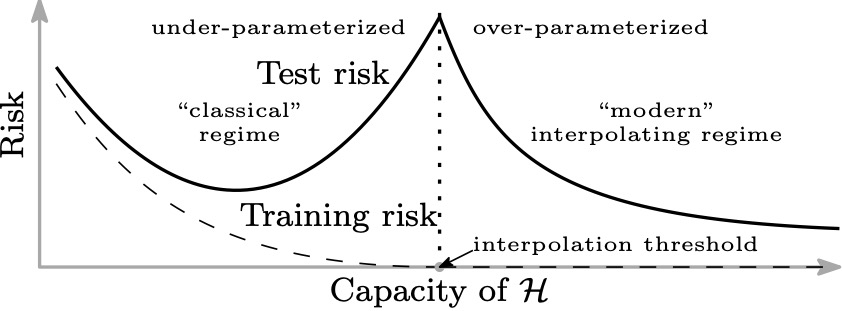- tags
- Neural network training, Neural networks
- resources
- (Belkin et al. 2019)
Double descent is a phenomenon usually observed in neural networks, where the usual bias-variance tradeoff seems to break down: test error keeps decreasing as we over-parametrize the network or add more training examples. This was observed for over-parametrized neural networks in (Geman et al. 1992).
An illustration from (caption is also adapted from the paper) (Belkin et al. 2019):

Figure 1: Illustration of the double descent effect in deep neural networks. The double descent risk curve, which incorporates the U-shaped risk curve (i.e., the “classical” regime) together with the observed behavior from using high capacity function classes (i.e., the “modern” interpolating regime), separated by the interpolation threshold. The predictors to the right of the interpolation threshold have zero training risk.
Bibliography
- Mikhail Belkin, Daniel Hsu, Siyuan Ma, Soumik Mandal. . "Reconciling Modern Machine Learning Practice and the Bias-variance Trade-off". Arxiv:1812.11118 [cs, Stat]. http://arxiv.org/abs/1812.11118.
- Stuart Geman, Elie Bienenstock, René Doursat. . "Neural Networks and the Bias/variance Dilemma". Neural Comput. 4 (1):1–58. DOI.